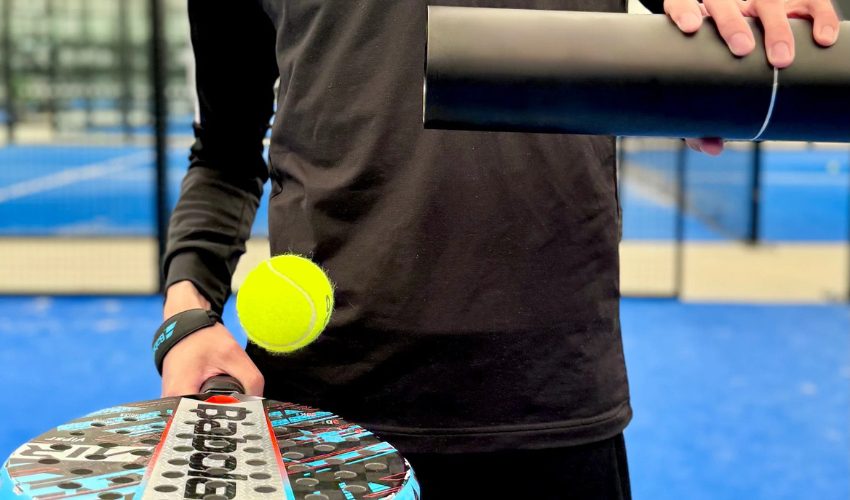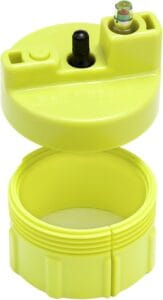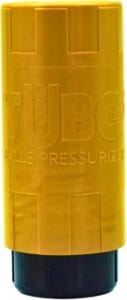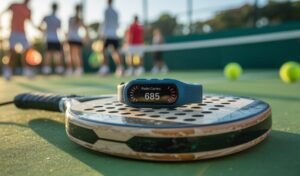After a tough padel match where the rallies were sharp and the smashes felt perfect, the balls suddenly started to lose their magic. That crisp bounce from the first set? Gone. Instead of the lively pop you expect, there’s a dull “thud” with every hit – a sure sign it’s time to look at the best padel ball pressurizers to keep that fresh, match-ready feel.
If you’re nodding right now, trust me – I’ve been there more times than I can count.
Over the years, I’ve gone through more padel balls than I care to admit. And while I used to think that was just “part of the game,” I eventually discovered a simple fix that not only saved me money but also kept my matches feeling fresh: a padel ball pressurizer.
In this guide, I’m going to share the hard-earned lessons, the top models I’ve tested, and the details most people skip over. By the end, you’ll know exactly which pressurizer deserves a permanent spot in your padel bag.
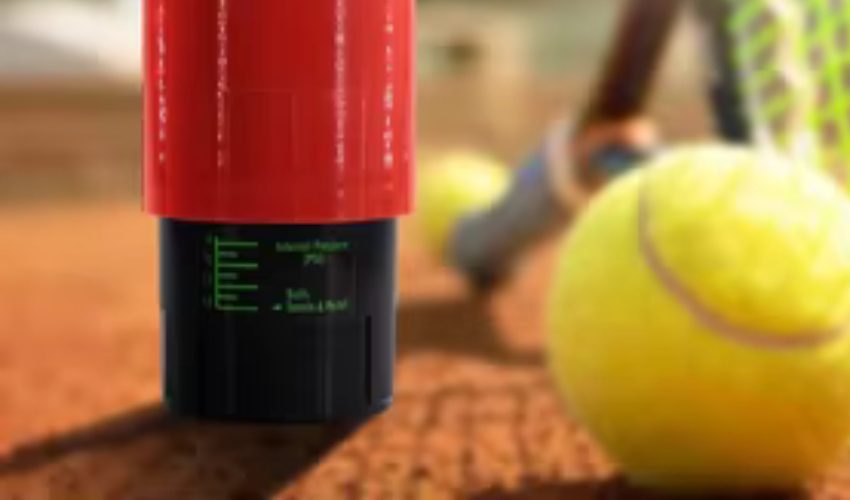
Why You Absolutely Need a Padel Ball Pressurizer (Trust Me on This One)
Before we dive into the reviews, let’s get one thing straight – if you’ve never used a ball pressurizer before, you’re almost certainly throwing money away.
Here’s the reality: from the second you crack open that shiny new can, your padel balls start losing pressure. It’s not bad luck, and you’re not imagining things – it’s just physics doing what physics does best.
Fresh padel balls usually start life at around 10–11 PSI. But because rubber and felt are ever so slightly porous, that precious air slowly leaks out. After just a couple of sessions, you’ll notice the difference – less bounce, softer feel, and yes, that dreaded flat “thunk” sound.
A good pressurizer changes the game. By keeping your balls in a controlled, pressurized space between matches, it slows this air loss dramatically. Some models can even give slightly flat balls a second life by pumping them up beyond their factory pressure.
I’ve tested this first-hand: balls that would normally be ready for the bin after three matches have lasted me up to 10 matches with a proper pressurizer. If you play twice a week and normally go through a can every week, that’s the difference between spending over Dhs 1,500 a year on balls… and spending less than half of that.
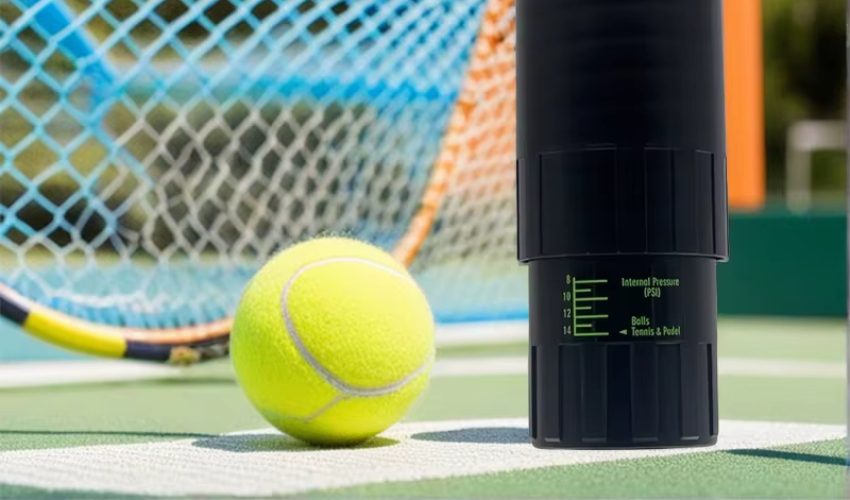
The Top 4 Best Padel Ball Pressurizers That Actually Deliver
After months of testing, borrowing from friends, and yes, buying a few too many “miracle” gadgets that didn’t live up to the hype, these are the five pressurizers that actually do what they promise.
1. Pascal Box 3B – The Gold Standard for Serious Players
If you’ve played padel long enough, you’ve probably heard someone talk about the Pascal Box 3B in almost reverent tones. And honestly? They’re not exaggerating.
Why it stands out:
This thing looks like it was designed for a science lab – a sturdy, clear polycarbonate cylinder with a built-in precision gauge that tells you the exact PSI inside. You can pump your balls back up to the original 10–11 PSI… or even higher (up to 35 PSI) if you’re trying to breathe life back into ones that are starting to sag.
My real-world experience:
I’ve had mine for over a year, and the results are nothing short of impressive. If I put balls in straight after a game, they can easily survive 10 matches before losing their zip. And I’ll admit – there’s something weirdly satisfying about glancing at the gauge and knowing my balls are sitting at a perfect 12 PSI, ready for action.
The build feels bulletproof. The lid locks in with a tight, professional seal, and the body is so tough that I honestly think it could survive a fall from the stands.
The downside:
It’s not cheap – expect to drop somewhere between $70 and $90. And you do need to pump manually for 2–3 minutes, which some people find annoying. For me, it’s just part of my post-match ritual now.
Pros:
- Outstanding at preserving and restoring pressure
- Exact PSI control with precision gauge
- Built to last for years
- Holds 3 padel balls (or 4 frontenis balls)
- Professional-grade seal
- Can revive slightly flat balls
Cons:
- Higher price tag
- Requires manual pumping
- A bit bulkier than simpler tubes
- Takes up more bag space
Best for: Competitive players, coaches, and anyone who plays at least 3 times a week and wants pro-level consistency.
2. Bounce Tube – The French-Made Efficiency Expert
Leave it to the French to make a ball pressurizer that’s both functional and stylish. The Bounce Tube is clever, compact, and easy to use.
What makes it unique:
It has an integrated pump built right in – no need for an extra bike pump or separate parts. Just pop your balls inside, use the smooth pump action, and you’re done.
On-court reality:
I found it refreshingly easy to use. The pump is quick, and the whole unit is small enough to throw into a crowded padel bag without playing Tetris. They claim you can get 3 times more play from your balls – and in my testing, I consistently hit 6–8 matches before the bounce noticeably faded.
Pros:
- Quality French build
- Integrated pump – no missing parts to worry about
- Compact and travel-friendly
- Solid performance extending ball life
- Quick to use
Cons:
- A bit pricier than basic tubes
- Only fits 3 balls
- No precise PSI gauge
- Still requires manual pumping
Best for: Players who value efficiency, travel light, and don’t want to fiddle with separate pumps.
3. Ball Rescuer – The Eco-Warrior’s Choice
This one is genius in its simplicity. Instead of adding a whole new piece of kit to your bag, the Ball Rescuer turns your empty ball cans into mini-pressurizers.
How it works:
It’s basically a specially designed lid with a built-in pressure indicator. Screw it onto a used can, attach a bike pump, and inflate to the desired pressure.
Why I like it:
It’s ultra-portable and very eco-friendly. I’ve used it for months, and as long as the can is in good condition (no cracks or dents), it does a great job keeping balls playable for extra matches.
Pros:
- Very compact and light
- Affordable
- Reuses existing cans – less waste
- Built-in pressure indicator
- Works with most standard ball cans
Cons:
- Relies on can being in good shape
- Slight learning curve to get a perfect seal
- Needs an external pump
- Limited to 3 balls
Best for: Eco-conscious players, minimalists, and those on a budget.
4. Turbo X3 – The Sweet Spot Solution
If the Pascal Box feels like overkill and the Ball Rescuer feels too basic, the Turbo X3 sits comfortably in the middle.
Why it’s appealing:
It’s compact, durable, and simple to use. Many versions include their own pumping system or quick-valve design, so you’re not scrambling for extra gear.
My take:
The Turbo X3 doesn’t have the fine-tuned control of a Pascal Box, but it delivers exactly what most club players want – balls that stay fresh for multiple sessions without fuss.
Pros:
- Easy to use
- Portable
- Fair price for good performance
- Often has built-in pumping system
- Good balance between cost and results
Cons:
- Less precise pressure control
- Primarily for preservation, not full “revival”
- No PSI gauge in most versions
Best for: Regular club players who want convenience and solid results without a steep price tag.
How These Pressurizers Actually Work (Without the Science Degree)
In the simplest terms, pressurizers keep the air pressure inside the storage container higher than the air pressure outside. This prevents air from escaping the balls and keeps their internal pressure close to what it was when they left the factory.
Think of it like keeping your soda in a sealed bottle – the bubbles stay in. Open it and leave it out, and you’re left with flat, sad liquid. Same story here.
Some pressurizers just maintain the original pressure so balls stay fresh longer. Others – like the Pascal Box – can increase the pressure slightly to give slightly dead balls a second chance. It’s not magic, but it works.
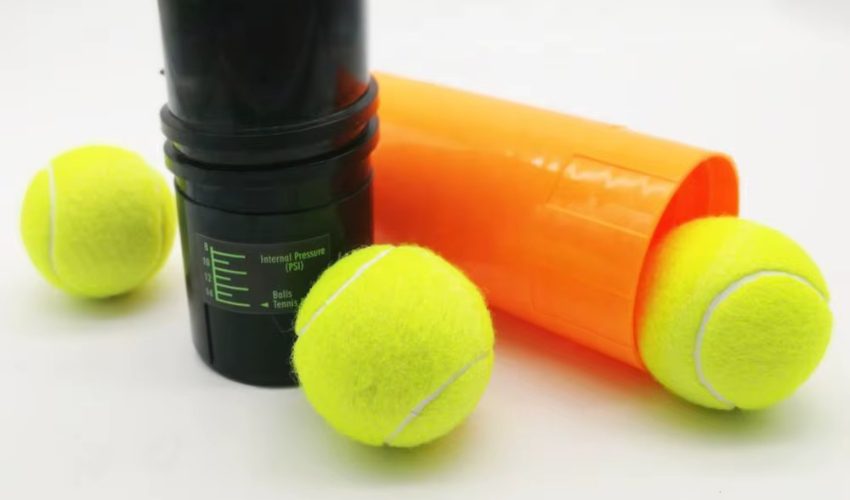
My Final Take
A good pressurizer isn’t just a “nice-to-have” – it’s a piece of kit that will save you money, improve your playing experience, and reduce waste.
If I had to choose:
- Best overall: Pascal Box 3B – it’s the most precise, durable, and proven.
- Best for convenience: Bounce Tube – Easy to Use.
- Best budget/eco choice: Ball Rescuer – small, cheap, and does the job.
Whichever you pick, the key is to use it consistently. Put your balls in right after you play, keep them sealed, and you’ll start noticing the difference in your very next match with the Best Padel Ball Pressurizers.
Do you want to improve your Padel Game Plan? For additional insight of the sport and any Padel advice, keep your eyes peeled at PadelGamePlan.com!
FAQ – PADEL IMPROVEMENT
How to get better at padel?
You will need regular practice, hit on the walls and watch matches of professionals. Read this Article – How to play Padel Tennis.
How can I improve my Service?
For more information on Padel Service, please read the Article – Best Padel Serve Techniques
Can I know more about the Rules of Padel Tennis?
Absolutely, for a beginner-friendly explanation of the Rules of Padel Tennis, please have a look at the Article – Rules of Padel Tennis. For Official Rules, please download the official rules of Internatlonal Padel Federation here.
FAQ – PADEL FOR CHILDREN
At what age should children start Padel Tennis for children?
Children as young as 4 can start out with foam balls and mini-rackets. The majority of clubs are for ages 5–15.
How does padel improve teamwork in kids?
Doubles requires constant communication and mutual strategies; collaboration is natural.
Can padel help academically?
Doubles requires constant communication and mutual strategies; collaboration is natural.
What is a good reason why padel is safer than tennis for little kids?
Enclosed courts, slower balls, and lighter gear reduce injury risks significantly.
Is there any competitive padel opportunity for kids?
Absolutely! Try to look for Junior leagues that offer Padel tournaments for under-12 and teen divisions. the positive impact of padel tennis on children
FAQ – PADEL EQUIPMENT
Do I need special padel tennis attire?
Please read the Article – Top Padel Clothing Essentials.
Do you have a checklist of padel tennis essentials I’ll need?
Could you recommend which padel balls I should use?
Please read the Article – Best Padel Balls.
Planning a Padel Tournament?
Use our Free Tool and get the schedule in seconds.
FAQ – PADEL TENNIS COURT
Is it possible to erect a padel court in my garden?
Installation is possible with a minimum area of 10m × 20m, subject to local zoning approval. For more information, Read this Article.
How much the cost of a padel court?
A typical padel court can range from AED 335,000 to AED 1,113,000, depending on materials, location and amenities. See the full cost breakdown here: Article – How much does it cost to build a padel court.
What about lighting required for the padel court – what advice can you give on that?
Please have a read through on the Article – Essential Padel Lighting Tips.


